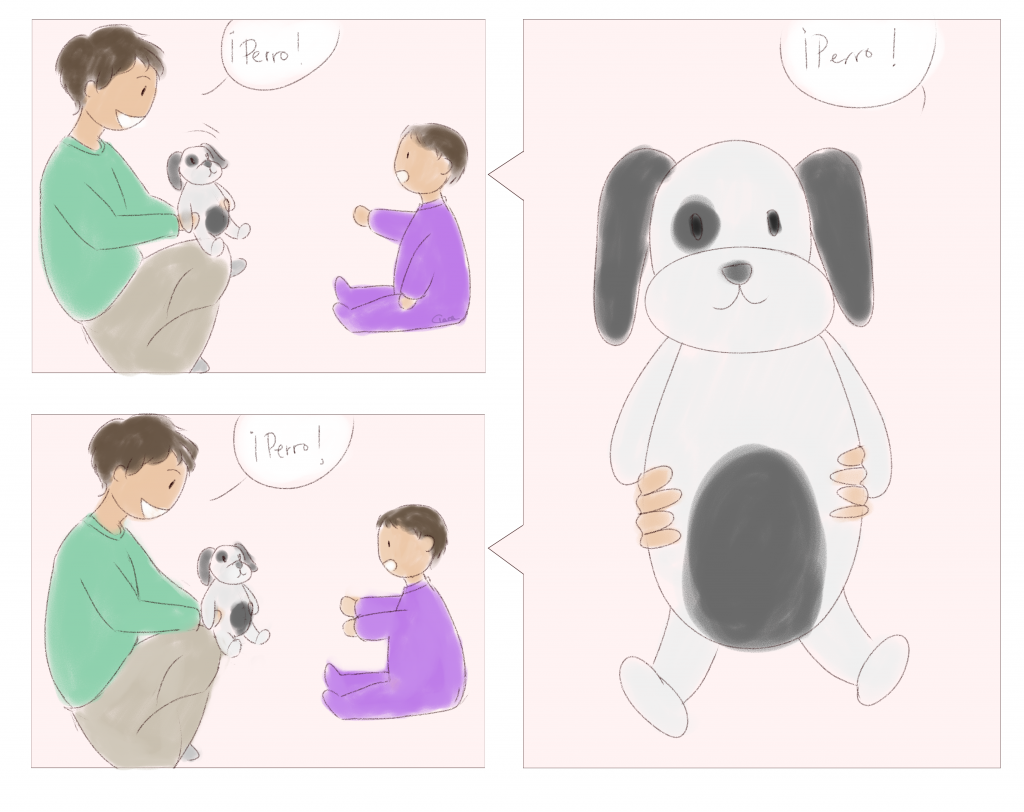Does showing an object while saying the word help a child learn vocabulary?

When we meet a baby, we may make more exaggerated gestures than we may when talking to an adult. Can these modifications, be they small or big, actually make language learning easier?
One way that our movements and gestures can help a baby learn language is through ‘multimodal communication’. We could simply talk to the child. In this case, the child would use her sense of hearing to learn. Or, we could also show a child something while talking. In this case, the child could use her sense of hearing and her sense of sight to learn. Having two clues, rather than one, can help a child learn. Research shows that saying a word like ‘car’, while shaking a toy car or bringing it closer to a child can help a child learn that ‘car’ means that thing.
Language learning is like a scavenger hunt. The more clues there are, the easier it is to solve the puzzle.
Often, caregivers already use many of modalities when they communicate children. There is not one magic mix of modalities or clues to use. Mix and match what comes naturally to you!
This was one example of how different senses can help learn language, join in next time when we discuss the role of touch for language learning.
The scientific sources of our comics:
